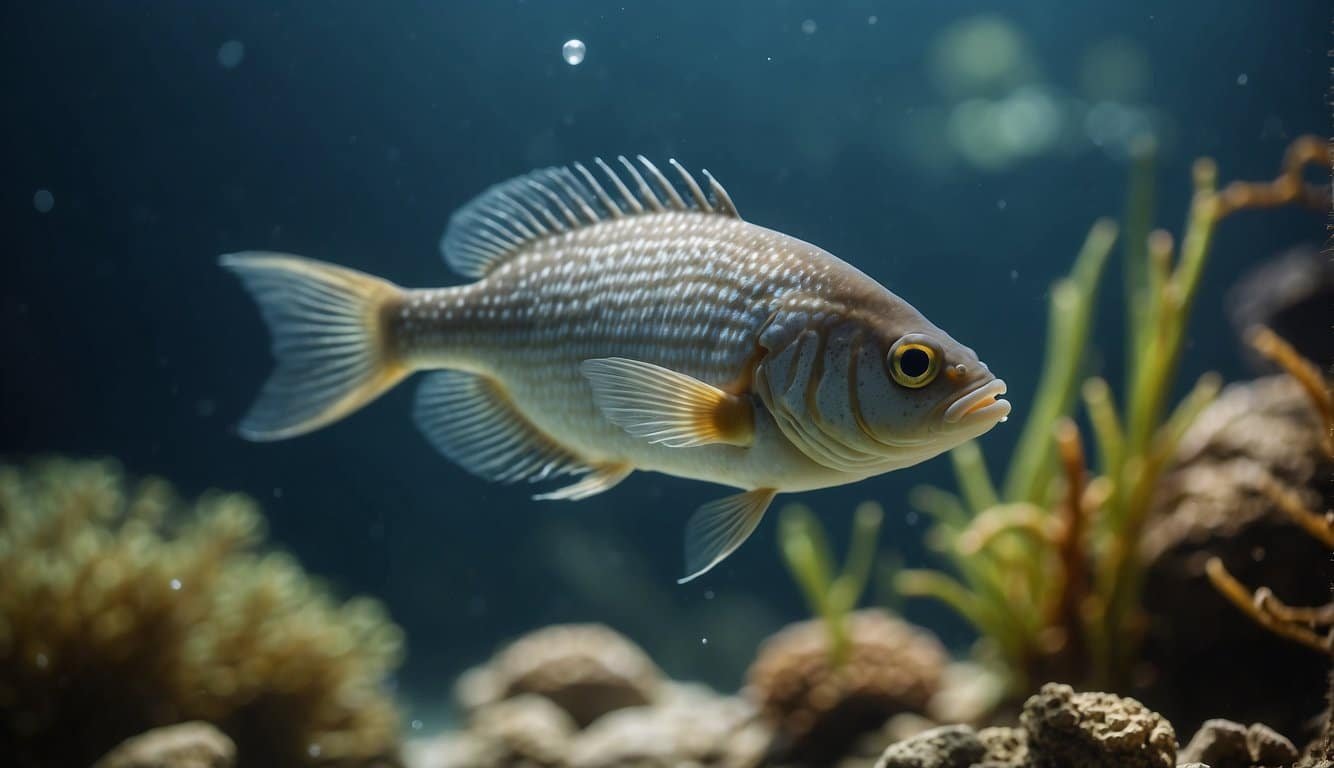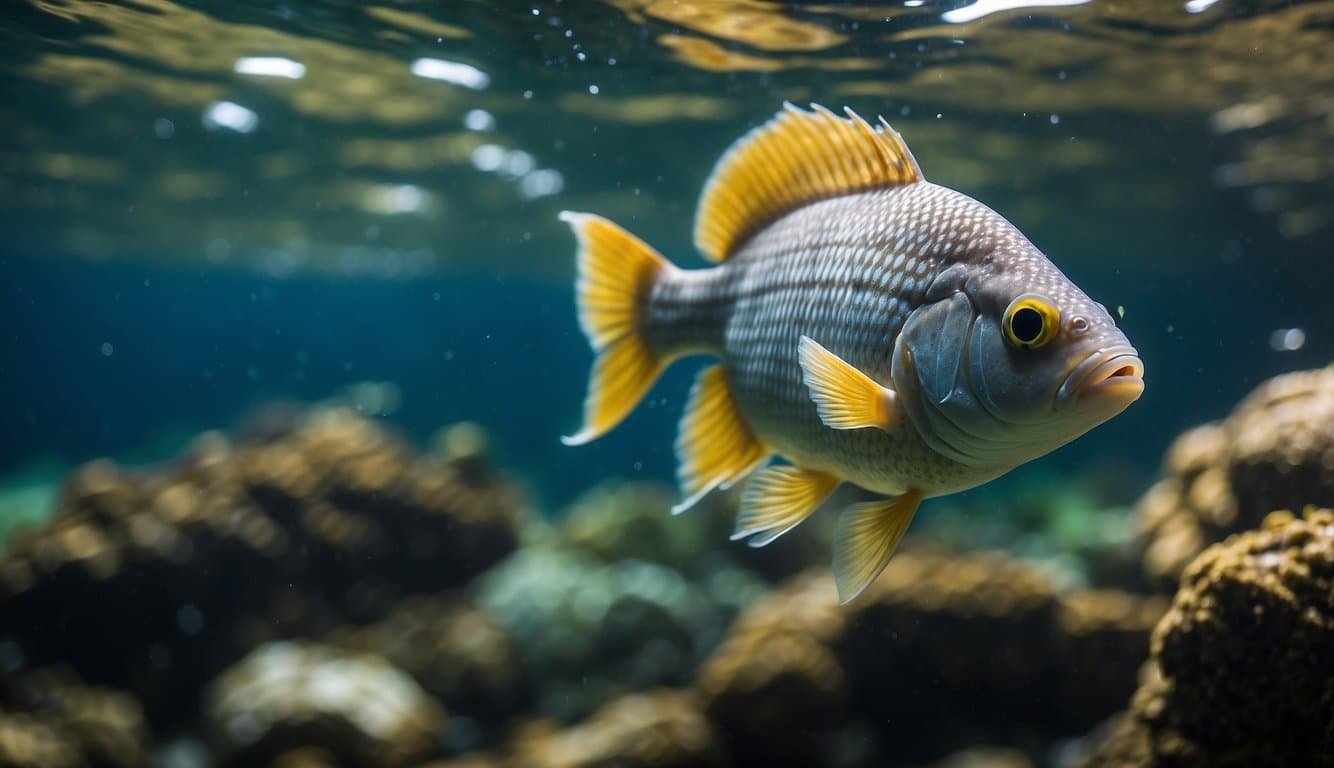Understanding Fish Hydration and Thirst
In the vast and varied aquatic world, fish have developed intriguing mechanisms to maintain hydration and electrolyte balance. Freshwater fish and their saltwater counterparts have adapted uniquely to their environments through a process called osmoregulation. This is the fancy term for how they balance their internal water and salt content with that of their surrounding water.
For freshwater fish, life is a constant battle against dilution. They live in an environment where the salt content in their bodies is higher than in the water. Consequently, water continuously flows into their bodies by osmosis, and they address this by excreting large amounts of very dilute urine. As a result, they don’t experience “thirst” in the same way terrestrial animals might.
Saltwater fish have the opposite challenge. The ocean is like a salty soup, and these fish risk dehydration since the water in their bodies is less salty than their environment. To combat this, saltwater fish drink copious amounts of seawater, actively excreting the excess salt through specialized cells in their gills and kidneys. This adaptation keeps them suitably hydrated without a conscious feeling of thirst.
In the controlled environment of an aquarium, the balance between the water and salt a fish is exposed to is maintained by careful monitoring and adjustment, ensuring the artificial habitat mimics the natural environment of the fish.
Whether or not fish feel “thirst” in a way we can relate to is still a subject of scientific inquiry, but it’s clear that their bodies have honed the art of water balance to a fascinating degree. The Physiological Basis of Thirst provides more information on the topic, while insights on the distinctions between freshwater and saltwater fish and their osmoregulation techniques can be found in studies of Comparative Physiology of Body Fluid Regulation.
Osmoregulation in Fish

Osmoregulation is the complex process by which fish maintain the balance of salts and water in their body, which is crucial for their survival across various aquatic environments.
Osmoregulatory Mechanisms
Fish exhibit a fascinating range of mechanisms to regulate their internal salt and water balance. Freshwater fish, for instance, face a constant threat of their bodily fluids becoming diluted. They tackle this by actively taking in salts through their gills and excreting large amounts of diluted urine. On the other hand, their saltwater counterparts do the opposite: they drink seawater and expel the excess salts through specialized chloride cells in their gills. The cellular membranes play a critical role in this process, allowing the transport of ions against the gradient, an action essential for maintaining homeostasis.
Salinity Challenges on Fish
Salinity poses different challenges between freshwater fish and saltwater fish. Salmon are an excellent example of osmoregulatory adaptability, transitioning from freshwater to seawater and back during their life cycle. In contrast, sharks have developed a unique strategy to deal with salinity; they retain urea in their bloodstream to offset the osmotic pressure of the ocean. Moving between water types requires fish to change how they osmoregulate. Pumping ions in or out of the gill epithelium accordingly, they protect their cells from either swelling with excess water or dehydrating in the salty sea.
For more insight into the mechanisms of osmoregulation, one can refer to research focused on osmoregulation in fish and the comparative physiology of body fluid regulation.
Behavioral Adaptations to Water Conditions

In the vast and diverse aquatic world, fish exhibit remarkable adaptations to maintain water and salt balance in their bodies. Whether they swim in the salty ocean or the fresh waters of rivers and lakes, their strategies are finely tuned to their environments.
Drinking Patterns in Sea-Dwelling Species
Sea-dwelling fish face a relentless battle against dehydration due to the high salt concentration in their habitat. To combat this, they drink seawater—a behavior driven by a fundamental need to stay hydrated. As they drink, specialized cells and processes come into play to handle the excess salt. The process of osmosis dictates that water tends to move from areas of low salt concentration to areas of high salt concentration, which could lead to the dehydration of saltwater fish if not for their drinking habits. Thirst, a reflex familiar to mammals, is managed differently in fish; for instance, amphibious fish have evolved convergent mechanisms to express being thirsty.
Excretion and Filtration Processes
The adaptation doesn’t end with drinking. Seawater fish must also excrete the excess salt taken in with the water they drink. Their gill membranes play a crucial role in this excretion process, acting as a filtration system to remove salt ions from their bodies. This osmoregulatory function is essential for maintaining internal salt concentration levels. Furthermore, their kidneys help by producing urine that’s more concentrated than their blood, ensuring they keep losing salt and not precious water. The kidneys and gills working together showcase a level of adaptability essential for survival. This complex anatomy and physiological processes underscore the meticulous refinement that underpins life in the sea.

